"A Lady, Very Dear to Me"
The Romance of John Wilkes Booth and Lucy Hale
The soldiers who killed John Wilkes Booth thoroughly searched his body. From his pockets they recovered an appointment book he'd been using as a diary. They also found five photographs. Four of them depicted beautiful young actresses. That was no surprise. The stage star had a national reputation as a ladies' man. The fifth photo, however, was a surprise. It also depicted a young woman, but she was hardly beautiful. Indeed, she seemed rather plain, even a little doughy. Who was she?
 |
| Lucy Lambert Hale photo found on Booth's body |
Her name was Lucy Lambert Hale. "Bessie", as she was sometimes called, was the daughter of John Parker Hale, a vocal abolitionist who served 20 years as a Congressman and U.S. Senator from New Hampshire. And there is strong evidence to suggest that in April of 1865, she was engaged to marry Booth.
It's hard to imagine, from looking at her photo, that she was the type of woman who would attract -- much less ensnare -- a playboy like Booth. But looks can be deceiving. Lucy Hale had been breaking hearts since she was 12, when she started receiving love poems from a Harvard student named William Chandler. She also captured the fancy of Oliver Wendell Homes Junior when she was 17. After her father moved the family to Washington at the beginning of the Civil War, Lucy became a belle of Capitol society. One of her more ardent admirers was Robert Todd Lincoln, the new president's son.
On Valentine's Day, 1862, Lucy received an anonymous letter. The writer confessed, "You resemble in a most remarkable degree a lady, very dear to me, now
dead and your close resemblance to her surprised me the first time I saw
you...I shall always associate
you in my memory, with her, who was very
beautiful, and whose face, like your own I trust, was a faithful index
of gentleness and amiability." The missive was signed "A Stranger".
Her correspondent was none other than John Wilkes Booth, who was -- at that time -- preparing for a lengthy engagement at the Boston Museum. Among the roles he would perform was the title character in the play "The Stranger".
In late 1864, Booth settled in Washington, taking rooms at the National Hotel. It may not be a coincidence that among the other tenants was the family of Senator Hale, including his daughter Lucy, who would turn 24 on New Year's Day. During the first months of 1865, Booth and Lucy were seen regularly in the hotel's public rooms. She got him a ticket to attend Abraham Lincoln's second inauguration on March 4th. Booth notified his mother that he was engaged to be married (her approval was grudging, at best) and his sister Asia confirmed the match.
 |
| National Hotel, Washington D.C. |
 |
| John Parker Hale |
Lucy's father had no use for his daughter's suitor. John Parker Hale was a staunch Union supporter. Booth was an acknowledged Southern sympathizer. Hale hoped his second-eldest daughter would marry the president's son, not some mere actor. After he lost his 1864 bid for re-election, Hale petitioned President Lincoln for an appointment as U.S. Ambassador to Spain. Lincoln agreed and signed his formal commission to the post on the fateful day of April 14, 1865. Hale may have been impelled to seek the job as a way to get Lucy away from Washington -- and Booth.
 |
| Robert Todd Lincoln |
The couple met on the morning of the 14th at the National Hotel. Lucy may have informed Booth that her father's appointment was now finalized and the family would soon sail for Spain. She spent the afternoon brushing up on her Spanish (assisted by Robert Todd Lincoln). Booth spent the rest of the day rousing his co-conspirators to action. That night, he shot the president.
For a century and a half, historians have debated the Booth-Hale relationship. Was the actor sincerely in love with the politician's daughter? Was he merely using her to gain entree to the highest circles of society and government? Did he see Lucy as his ticket not just to Lincoln's inauguration but to a close approach to the president himself?
Columnist
J. Dennis Robinson offered an enticing conjecture that may illuminate the relationship. He notes there are several reports that Booth and Lucy exchanged rings. And he recounts a story that, one night, Booth sat in a bar with an actor friend, repeatedly kissing Lucy's ring and cooing her name. Robinson speculates that the anecdote sheds light on the assassin's final words. After he was shot in Virginia on April 26th, Booth -- paralyzed from the neck down -- asked his captors to lift his hands toward his face. "Then," the columnist writes, "Booth mumbled something that has been misquoted ever since.
It sounded like, 'Useless, useless.' But they were garbled, gurgling
sounds, whispered, barely audible according to witnesses." Robinson points out there was a ring on the dying actor's hand, one he had kissed again and again. "Booth was repeating his lover's name," Robinson concludes. "He said, 'Lucy -- Lucy.' He moved
his dry cracked lips as if to kiss the ring a final time -- and died."
 |
| Matthew Brady photo of Lucy Lambert Hale in 1863 |
The government questioned everyone who had been associated with Booth before the assassination, and arrested many of them. Lucy Lambert Hale, however, was never interviewed by investigators. Her father issued a statement denying she'd ever been engaged to the assassin. Then the family went to Spain. Lucy spent five years in Europe, visiting France, Italy and Switzerland along the way. She returned to the United States in 1870 to attend to her father, who was in failing health. In 1874, at the age of 33, she finally married. Her husband was William Chandler, a corporate attorney whose heart she had stolen when she was 12 years old and he was attending Harvard. Chandler went on to serve as Secretary of the Navy and, in 1886, was elected to the U.S. Senate from New Hampshire. She died in 1915.
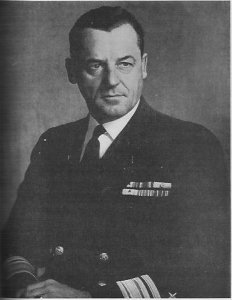 |
| Rear Adm. Theodore E. Chandler |
Footnote: Lucy's grandson, Admiral Theodore Edison Chandler, was a career Navy officer. After serving in World War I, he helped outfit the Navy destroyer
Chandler, named for his grandfather. During World War II, he commanded ships in both the Atlantic and Pacific theaters. He died in January of 1945 during a kamikaze attack on his flagship, the
U.S.S. Louisville, about 100 miles from Manila Bay in the Philippines.


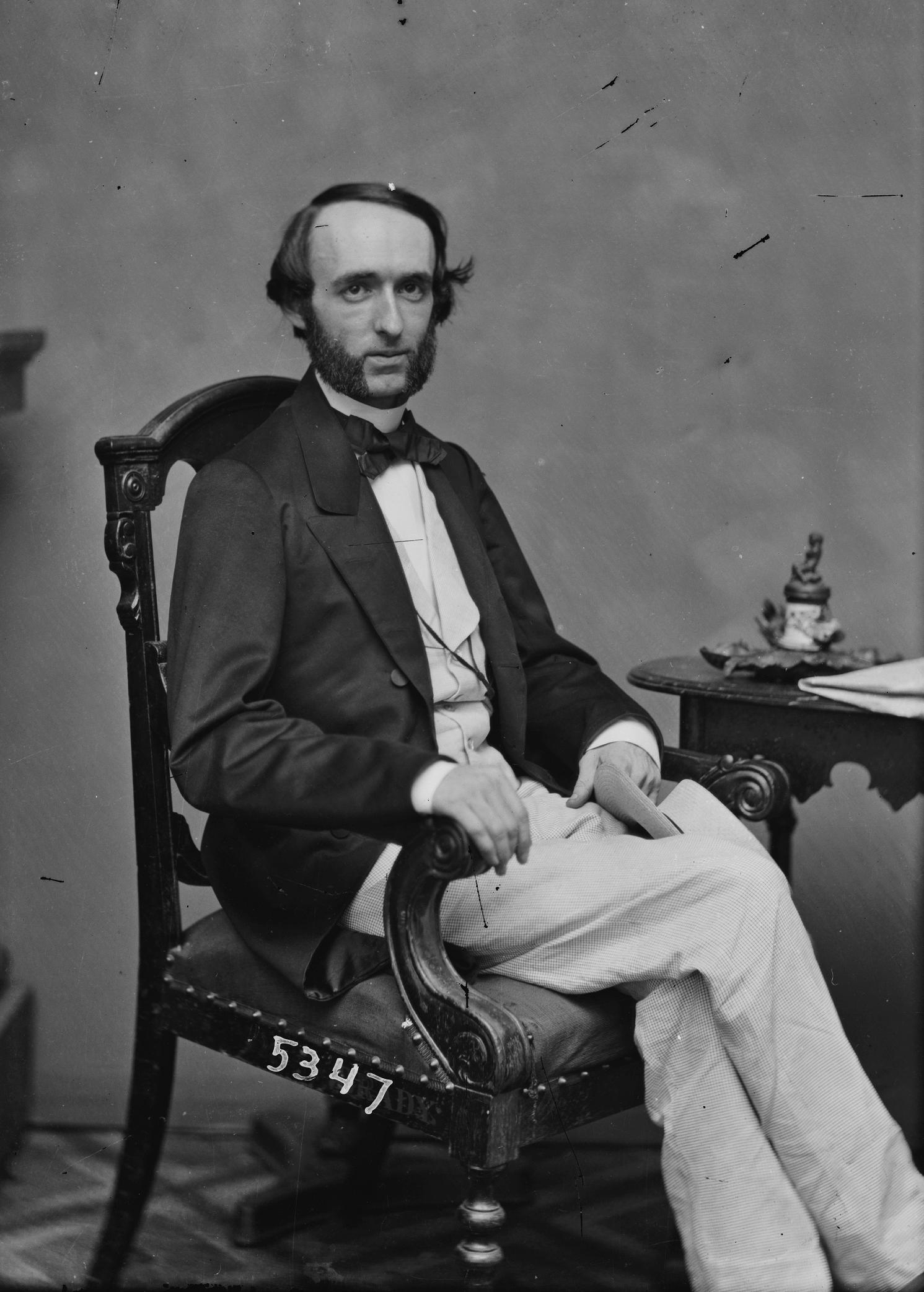
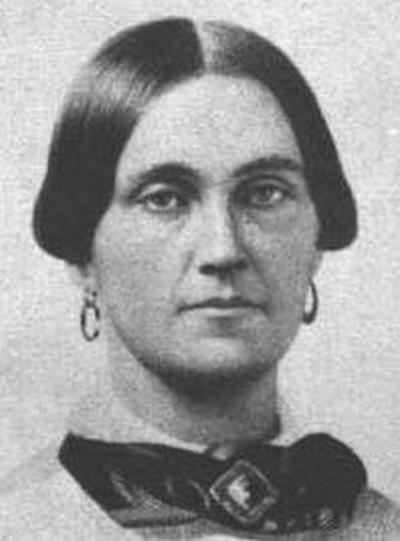
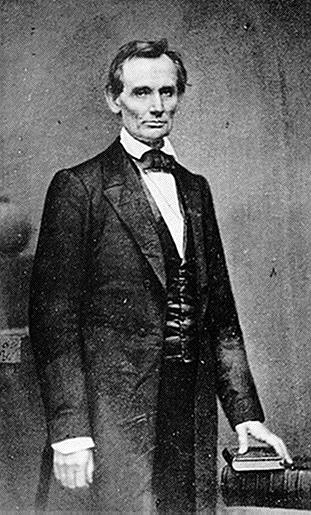






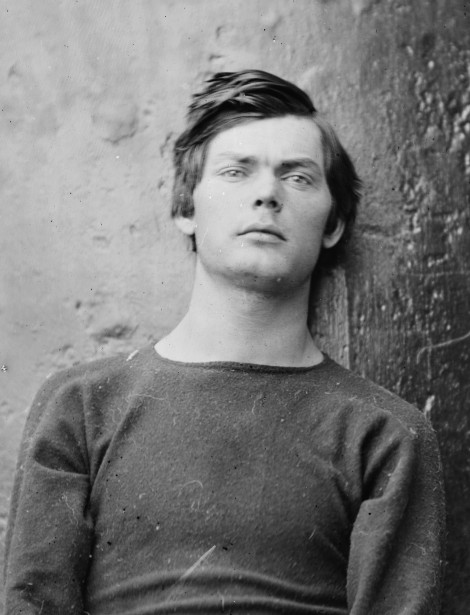



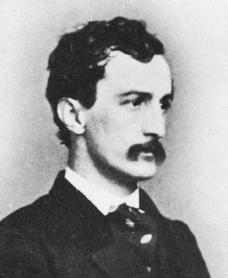
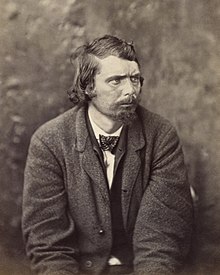
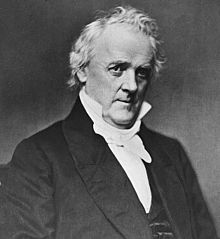
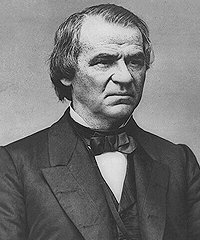

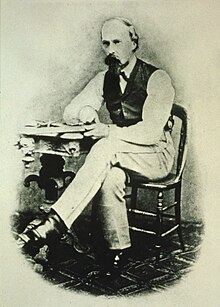

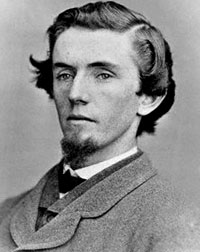



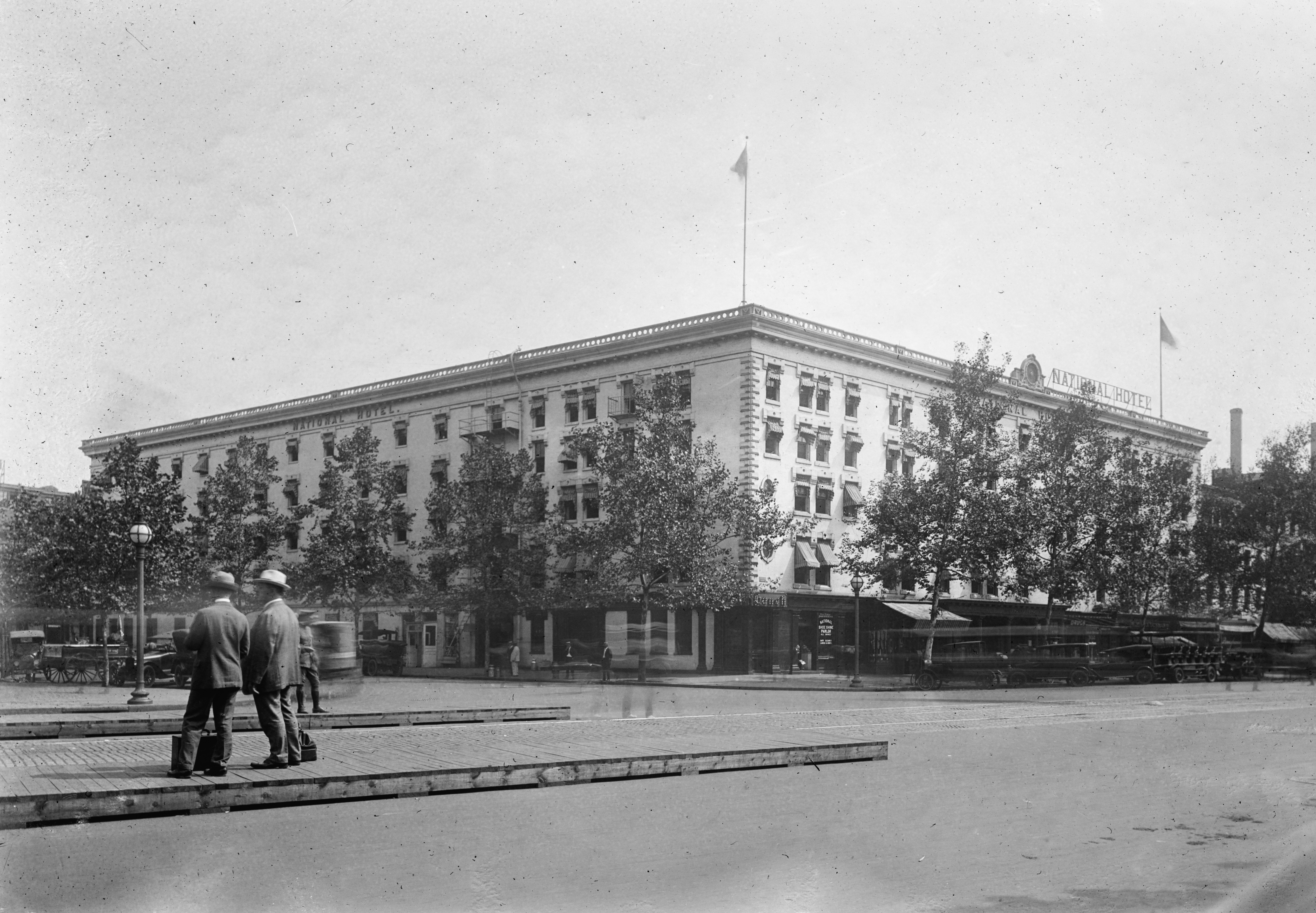


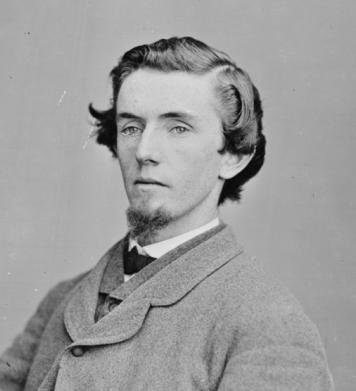





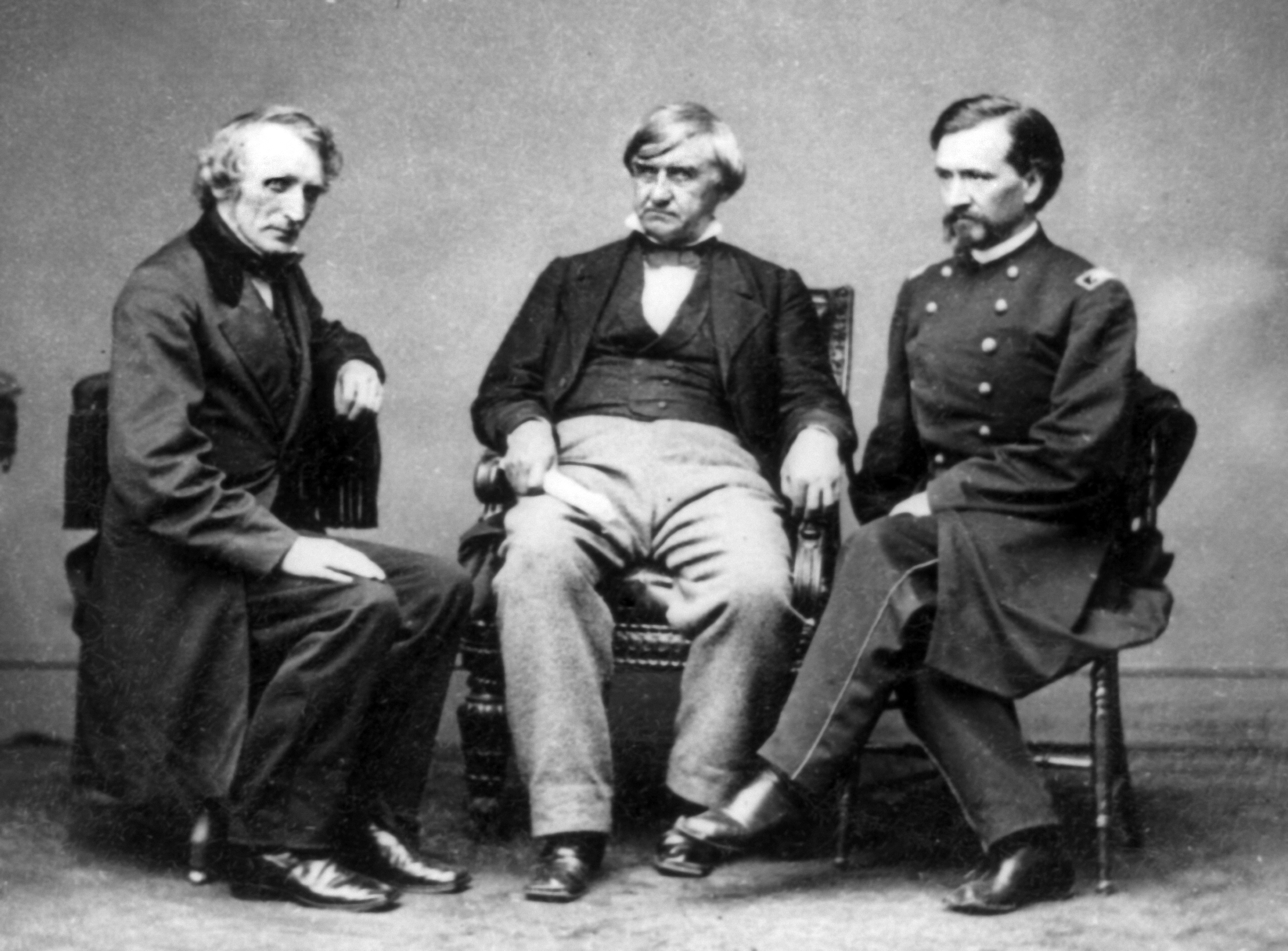


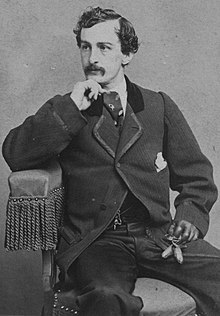 But the evidence is clear that the youngest of the acting Booth brothers was a shining star of his age. It's instructive to note that at the beginning of his May 1862 engagement at the Boston Museum, his name appears at the bottom of the handbills promoting each play. By the end of the run, the name "J. Wilkes Booth" was emblazoned across the top.
But the evidence is clear that the youngest of the acting Booth brothers was a shining star of his age. It's instructive to note that at the beginning of his May 1862 engagement at the Boston Museum, his name appears at the bottom of the handbills promoting each play. By the end of the run, the name "J. Wilkes Booth" was emblazoned across the top.




